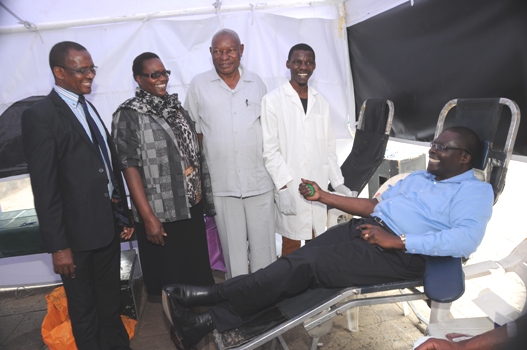By Allan Kibet and David Kipkorir
The Co-operative movement in Kenya on Thursday, May 19, launched a three day blood donation drive, an annual initiative in preparation for International Co-operatives Day that takes place on every July 2.
The co-operative movement spearheaded by the organizers of the event, Ushirika Organizing Council, is targeting over 1,000 blood donors across the country by the end of the exercise. They aim at raising over 2,000 pints of blood and have called on Kenyans of goodwill to join them to make the drive a success.
Kenya National Blood Transfusion Service (KNBTS) in 2019 reported blood shortages in the country that birthed a nationwide campaign towards blood donation, something that Ushirika Council, led by Vice Chairman Daniel Marube, made consideration of and jumped into the bandwagon to boost the drive and meet the national blood deficit.
The drive was launched on Thursday in Nairobi and is in partnership with Kenyatta National Hospital (KNH), Nairobi Metropolitan Services (NMS) and the Kenya Read Cross Society.
“Today, we have come here out of concern for our neighbours. As the demand for blood in Kenya grows to 500,000 units per year, statistics show that we are nowhere close to half of what is required to help those in need.
“In the past, the Co-operative movement has been doing about 200 blood donations daily, and we are hoping to increase to 300 per day this year. We have an overall target of 1,500 donors,” said Daniel Marube.
KNBTS estimates that in Kenya, two out of every three units of blood are transfused to mothers and children.
“It only takes an average of 15 minutes to donate one unit of blood and because the demand for blood transfusions doesn’t stop, we made this an annual campaign,” added Marube.
The KNBTS report indicated that only 16 percent of the 1 million units required were collected and global health experts believe that part of reasons behind the shortage is funding and the absence of a blood donation culture across the globe.
The cooperative movement continues to be the best vehicle to intermediate between savings and investments in addition to encouraging their members to embrace a savings culture for economic development.



